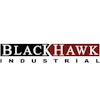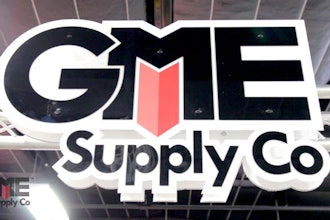BUILD YOUR FUTURE RIGHT:
The “Land and Expand Approach” to Building a Dynamic
eBusiness Ecosystem for Manufacturers and Distributors
110 North 5th Street 8th Floor
Minneapolis, MN 55403
1.866.746.0377
612.367.8600
www.insitesoft.com
INSITE SOFTWARE: ECOMMERCE STRATEGY CONSULTING
COPYRIGHT © 2014 INSITE SOFTWARE / P 866.746.0377 / WWW.INSITESOFT.COM2
INTRODUCTION
According to Forrester Research’s 2014 report “The Future of Business is Digital,” by Nigel Fenwick and Martin Gill:
”…digital technology has fundamentally changed two things: the dynamics of the markets in which you operate and the
speed needed to remain competitive”
eCommerce is clearly one of the catalysts for digital transformation, and your need for the speed to enable these
technologies, and weave them into the overall fabric of your business, is critically important. This white paper will
outline an approach to land and expand your eBusiness digital strategy with InsiteCommerce™, the leading .NET
eCommerce platform for manufacturers and distributors.
THE CHALLENGE
Until now, most eBusiness efforts have been
fragmented—deployed without a strategic plan or
having us services budgets. In today’s market these
conditions are simply unacceptable.
The fragmented and customized approach to selecting
and implementing eCommerce technologies of the past
is quickly causing an increased slowdown in execution
and an ever-increasing cost for organizations. With
multiple systems and tools in place that are poorly
integrated, the long-term viability of the ecosystem
finds itself either underperforming or, at the very least,
compromised.
As Forrester states:
“Digital is more than a bolt-on strategy. Bolt-on digital is
like painting go-fast stripes on a car; it doesn’t change
the underlying business. To become a digital business
requires enterprise transformation;… 1”.
Likewise, multi-year implementations can easily become
outdated before they are even launched and due to
the extended deployment life cycle will ultimately carry
a higher price tag. With a project scope that is “too
big,” the ability to gain agreement and ensure viability
of the effort often causes unexpected delays, as
well. For most organizations, this approach is not only
unnecessary; it may set a project up for failure.
Insite’s land and expand strategy disintermediates
both the bolt-on-fragmented approach and the multi-
year approach by allowing an organization to quickly
and cost effectively establish the “core” for its digital
ecosystem, enabling the speedy deployment of
additional strategies or adjacent technologies that are
increasingly available in the marketplace today.
Most organizations are challenged to architect an
effective ecosystem for this digital transformation
evolution. This is no small feat, as the technology
landscape, especially in the area of marketing, is
becoming increasingly complex.
THE COMPLEXITY OF THE LANDSCAPE
Digital enabling technologies are exploding. The
evolution of the Marketing Technology Landscape
produced by ChiefMartec is one graphic representation
of this rapid change. Creator Scott Brinkler states
“It comes with one main caveat: this graphic is not
comprehensive. It is just a sample, albeit a large one,
of the many different kinds of software available to
marketers today. There are many more companies —
indeed, entire categories — that were not included,
merely due to the constraints of time and space. And
by the time you read this, it will inevitably be out of
date due to new launches, re-launches, expansions,
exits, and mergers. The pace of change in this field is
breathtaking.”
1Unleash Your Digital Business, Forrester Research, Inc., March 19, 2014
COPYRIGHT © 2014 INSITE SOFTWARE / P 866.746.0377 / WWW.INSITESOFT.COM3
It is important to realize the complex challenges
faced by the CIO’s and CMO’s to make the “right”
choices. The density of this graphic alone should
have an impact on how an organization approaches
digital transformation. There is little guarantee for
“tried and true” in this emerging landscape today, and
companies need to shed their “color between the lines”
management styles and allow visionaries, marketers,
and technologists to experiment and innovate to solve
the problems facing them. The “fail fast and iterate”
approach is the one generating the best results today.
In the report “The State of Digital Business 2014”, Neil
Fenwick of Forrester Research notes that “existing
technology assets are not ready for digital strategy.”
The report highlights the technology deficit many
companies find themselves faced with after years of
squeezing technology budgets combined with the
“free-for-all” approach in which individual departments
are allowed to pursue technology implementations
that they independently fund. The resulting tangle of
technologies leaves many organizations dealing with
architecture so complex and customized that even minor
changes are expensive and slow. And when it comes to
integrating digital technologies, attempts by marketing
to circumvent the technology nightmare only exacerbate
the problem, creating disparate silos of data.
To be in a position to execute a highly profitable land
and expand strategy, an organization must have a vision
for an overall technology upon which it can build. The
following graphic represents Insite’s recommended
approach to building your technology landscape.
~950 Companies
COPYRIGHT © 2014 INSITE SOFTWARE / P 866.746.0377 / WWW.INSITESOFT.COM4
The core systems tier is both foundational and essential
to all eBusiness initiatives in order to enable the level
of customer engagement your customers desire. This
tier will typically include ERP, eCommerce, CRM, and
Business Intelligence. Recognize that other supporting
systems may be included in the landscape around these
core systems, and some overlap may exist. In general,
however, these four systems should be highly integrated,
reflecting an omni-channel model supporting the unique
policies and programs of the organization to all of the
personas inside and outside your four walls.
These systems represent the key “system of record” da-
tasets for customers, customer communications, promo-
tions, online and offline analytics, products, transactions,
inventory and warehousing, matrix pricing, fulfillment,
quoting, configurations, and more.
As your ecosystem evolves, look for opportunities to
shed customizations made to these systems, especially
to the ERP, so that the environment can be quickly up-
graded to take advantage of emerging capabilities and
to lower the overall cost of maintenance.
The Core Systems Tier
With the core systems tier in place, the ecosystem can
be efficiently and opportunistically extended to “plug in”
and leverage all of the additional technologies related
to web content and experience management, as well
as to marketing automation, experience, and operations
management. Common examples include live chat,
ratings and reviews, surveys, email subscriptions, and
personalization tools. This layer of the ecosystem is
very dynamic today, and incorporating plans to regularly
investigate, leverage, test, and measure the performance
of the marketing technologies employed is essential to
serving the increasing demands of your customers and
internal users.
The Marketing Tier
The Persona Tier
The ecosystem for all manufacturers and distributors will
need to serve a variety of personas both internal and
external to the organization. This is the most significant
delta from B2C eCommerce where the primary persona
is the consumer. “Customers” may include buyers,
engineers, maintenance managers, warehouse manag-
ers, requisitioners, clinicians, doctors, veterinarians, field
service managers, procurement managers, channel
developers, investors, product sourcers, and more.
Each of these personas may have various levels of au-
thority, expertise, information requirements, etc. Internal-
ly, sales, customer service, and call center organizations
can be better served from this ecosystem as well, with
the added benefit of providing the desired experiences
both inside and outside the organization.
To serve this diverse community, the eCommerce plat-
form must have the architecture to support the various
personas and all of the rule and information data that dif-
ferentiate the various roles. This is a significant require-
ment that demands a separate conversation and sets In-
siteCommerce apart from the rest of the field serving the
eCommerce needs of manufacturers and distributors.
The Sites Tier
With the core systems tier and the marketing tier in place
and ready to serve your personas, you are now ready
to launch any number of sites on top of this dynamic
ecosystem of value.
“You must think of your company as a part of a dynamic
ecosystem of value that connects digital resources in-
side and outside the company. You must harness digital
technologies both to deliver a superior customer experi-
ence and to drive the agility and operational efficiency
you need to stay competitive.” The Future of Business
is Digital, Forrester Research, Inc., Nigel Fenwick and
Martin Gill, March 10, 2014.
The Land and Expand Approach
“Land quickly” and “expand iteratively.”
Insite’s definition of “land quickly” is to identify the first
set of personas through which the most benefit can be
gained or to serve the greatest business need during
the “land” phase. Ideally, this phase would have duration
of no more than 6–9 months and may be implemented
as quickly as 30–60 days. All of the elements discussed
below are integral to accomplishing a high quality land
phase and to establish the ecosystem required for the
long-term digital journey.
COPYRIGHT © 2014 INSITE SOFTWARE / P 866.746.0377 / WWW.INSITESOFT.COM5
During this phase, the following key steps are accom-
plished:
• The InsiteCommerce framework is installed.
• The integration services are installed and imple-
mented with the other core systems of record and
their supporting systems to reflect the business rules
and data requirements for the organization. While
this is foundational to the land phase of the journey,
establishing this early on in the development of the
ecosystem is imperative for gaining speed in the
future “expand” phases of the journey.
• The first project is installed, and the base configura-
tion set up. Keep in mind that the land phase might
serve an internal persona, such as a sales rep with
a responsive site deployed on an iPad or mobile
phone. In a future phase, as the organization is able
to absorb the change, this application then can be
pushed out to external users to gain even more
coverage and efficiency. Similarly, the first phase
might be a classic B2B site primarily serving buyers
whose primary goal is to efficiently process orders
and look up history. The list of options for the land
phase are unlimited, however our recommendation
is to carve out a phase that allows the implementa-
tion of the project within a 6-month window. This
approach is also opportunistic. Once a site launches
with a proper onboarding program, an organization
will be surprised at how much they learn from their
customers….it happens every time. If an organiza-
tion is poised to listen and iterate on the feedback it
receives, the overall performance of the initiatives is
certain to improve.
• The project is implemented. This step may require
development to support the various requirements of
the site that extend beyond the web page library or
to support the implementation of the unique busi-
ness rules or data requirements for the company, its
products, or its customers.
• A large multi-brand manufacturer is replatforming
and decides to start with a corporate site followed
by a mobile site. By implementing the eCommerce
platform first and establishing the integration to their
ERP, the integrity of the product flow from the ERP to
a new CMS (where the product content is enriched)
establishes the long-term integrity of the product
data set. This integration layer then can support the
mobile application within the eCommerce platform
using the same enriched global product set.
• A large animal health manufacturer is migrating ERPs
worldwide. Throughout the migration, requirements
include a fully functioning B2B site for their veteri-
nary customers deployed in multiple languages and
currencies. By using the InsiteCommerce Web Page
Library and integration architecture, the migration
for the first country was accomplished in only 90
days, fully integrated to the new ERP with integrated
promotions management.
The Land and Expand Examples
The InsiteCommerce integration architecture allows
clients to control data sources and the associated
field mappings. While a “slightly disconnected”
integration model is preferred in order to preserve
maximum site uptime, the integration architec-
ture supports both real-time and batch-oriented
configurations to meet the business needs of the
client. In order to support both of these models, the
InsiteCommerce platform is architected to support
the complex architecture the various models require.
Examples of this architecture include matrix pricing,
multi-warehouse, many-to-many assignments of us-
ers to customer bill-to and ship-to records, custom
catalogs by user, bill-to, or ship-to, multiple units of
measure and conversions, rules based configura-
tions, multiple named lists, subscription orders,
multiple fulfillment options, budget management, and
many more.
Additionally, the platform is architected for unlim-
ited sites, supporting corporate, B2C, B2B, mobile,
customer microsites, sales rep applications, cus-
tomer service applications, and punchout applica-
tions.
Integral to this phase is the use of the InsiteCom-
merce Web Page Library. The Library contains hun-
dreds of fully functioning, pre-integrated, responsive
pages that reflect best practices for eCommerce
today and can be configured to serve a variety of
personas within one site or on a site-by-site basis.
The pages in the library are architected to efficiently
apply a custom site design and are extensible to ac-
commodate the uniqueness in every organization’s
data requirements, business model, or business
programs and corresponding rules.
COPYRIGHT © 2014 INSITE SOFTWARE / P 866.746.0377 / WWW.INSITESOFT.COM6
• A distributor of highly engineered industrial products
desires to quickly launch a customer portal while
they work on acquiring product content for a future
B2B online ordering site with complex product con-
figurations.
• A manufacturer of sporting equipment plans a first
phase of automating online ordering and customer
self-service to gain efficiencies in the customer ser-
vice department but found opportunities to automate
processes for sales reps, as well, and co-launch
these initiatives. Within 18 months they move 60% of
order acquisition to the online models.
InsiteCommerce is unmatched in its ability to enable
a robust ecosystem for the long term deployment of
eCommerce for an organization. With our strong orienta-
tion to “land” an organization within six months, we bring
a lower total cost of ownership and a true business to
business model that supports all aspects of eBusiness to
your organization. With our internal deployment resourc-
es and our expanding ecosystem of the best of breed
partners, we are the partner of choice for manufacturers
and distributors worldwide.
Conclusion
ABOUT INSITE SOFTWARE
Insite Software is a leading provider of B2B and B2C ecommerce platforms and internationally enabled shipping
solutions, serving more than 950 customers, design agencies and .NET development firms across the globe.
Headquartered in Minneapolis, Insite Software’s solutions are used by leading manufacturers and distributors to sell
and distribute their products to dealers, franchisers, stores, contractors, consumers and others, supporting competitive
advantage through end-to-end online order fulfillment. Offering eCommerce and shipping solutions for companies at
all stages of adoption, Insite Software solutions are fully integrated with a wide range of cloud platforms; CMS, CRM,
ERP, search, optimization, payment transaction, tax table, and online analytics providers. Visit us at www.insitesoft.com,
or via phone at 866.746.0377.
Build Your Future Right: The “Land and Expand Approach” to Building a Dynamic eBusiness Ecosystem for Manufacturers and Distributors
To remain competitive in today's rapidly transforming digital marketplace, manufacturing and distribution leaders are faced with many challenges to make the right choices about eCommerce technology. The need to quickly deploy new technologies and weave them into the overall fabric of their business is critically important. A Land and Expand strategy allows your organization to quickly and cost-effectively establish the “core” for its digital ecosystem and enable the speedy deployment of additional technologies that are increasingly available in the marketplace today.
Latest in Home
BlackHawk Adds McNutt as Northeast Region GM
September 16, 2025
Ferguson Reports Strong Results to Finish '25
September 16, 2025
Wesco Invests $10M in Procurement Software Startup
September 15, 2025


















